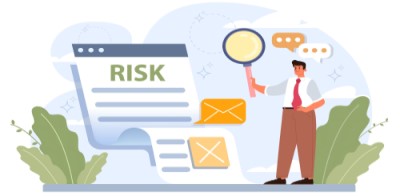The COSO Framework for Internal Control
April 3, 2025
 The COSO Framework for Internal Control
The COSO Framework for Internal Control
Internal frauds are a big part of the operational risk faced by any organization. This is truer of multinational companies who have business interests in various countries across the globe. This is because there are thousands of people in important positions making business decisions on behalf of the company. Hence, ensuring that all these employees…
 The Cost Structure in the Insurance Industry
The Cost Structure in the Insurance Industry
Insurance is one of the most regulated industries in the world. Also, there are multiple players which offer every type of insurance. As a result, the competitive pressures are very high. This ensures that the insurance companies are not able to charge exorbitant premiums. Almost every insurance company across the world is a price taker…
 Credit Derivatives: An Introduction
Credit Derivatives: An Introduction
Credit derivatives are the most important financial innovation in the field of credit risk management. These derivative instruments have been created quite recently. They have only been traded for a couple of decades as compared to other instruments like stocks and bonds which have been around for centuries. Within this short period of time, credit…
Scenario analysis is the third pillar of the framework suggested by the Bank of International Settlements in their Basel norms.
In the previous articles, we have already studied a collection of internal and external loss data as well as the self-assessment of risks. However, it is important to note that the loss data collection framework has certain shortcomings.
For instance, companies generally maintain loss data for three years. However, if a loss is likely to happen once in ten years, that risk is completely missed out on the loss data framework.
Scenario analysis, on the other hand, takes into account losses that may not have occurred till now but which have the potential to occur in the future. This is the main benefit of scenario analysis. They help the company identify emerging risks that are not The methodology used for scenario analysis is much more comprehensive.
The internal position of the company is studied in addition to the vulnerabilities posed by the external situation.
In this article, we will have a closer look at how scenario analysis works as well as what the shortcomings of this scenario analysis are.
There are three approaches that are commonly used by organizations to generate scenarios required for scenario analysis. They have been mentioned below:
Many companies conduct structured workshops where they invite many experts in various fields related to their operations.
The company also creates structured questionnaires which are aimed at exploring the possible risks that a company faces.
The objective of this workshop is to stimulate a dialogue between the various experts who express their opinion about various subjects and in the process discover new possible risks and scenarios.
The objective is the same i.e. to elicit an expert response. However, here the experts give their individual opinion since they are not able to interact with the other experts as they would have done in a structured workshop.
The characteristics of these interviews are the fact that they are unstructured. This means that there is no structured manner in which the discussion is being driven. Instead, the organization may decide to interview the experts one-on-one or they may have a group discussion with some experts while having an individual conversation with some others.
The end result of each of these exercises is that the company needs to have a new list of risks that have been identified in the process.

The real challenge is the next step wherein these risks have to be converted into numbers. Various statistical techniques are used to do so.
For instance, expert opinion is collected about the possible frequency of these losses along with the possible impact. These numbers are then blended in with the empirical distributions and used to generate more detailed data.
Although scenario analysis is an excellent tool to identify and mitigate operational risk, it is still based exclusively on the opinion of the experts.
If a different set of experts was used to perform the same scenario analysis, the outcome would be significantly different. The effectiveness of the process is completely dependent upon the human beings performing it.
This is the reason why all the cognitive biases play a part in the scenario analysis. For instance, there have been studies which show that if the same experts were presented information in a different order, their opinions were different!
The familiarity of the experts with certain types of risks also plays an important part. Experts tend to focus more on risks that they know about and ignore the risks that are new to them.
Also, many times experts have a predefined opinion to which they are anchored to. Instead of having an open mind about the new data, they often use the new data points to support their old positions. Many times experts might disagree with one another. However, they will still not voice their disagreement because it would mean confronting others and some people may not want to do that.
The bottom line is that scenario analysis is a very important tool used in the advanced measurement approach suggested by the Bank of International Settlements. Despite its shortcomings, it is the only method that can be reliably used to manage the unknown risks in any organization’s operations.
Your email address will not be published. Required fields are marked *